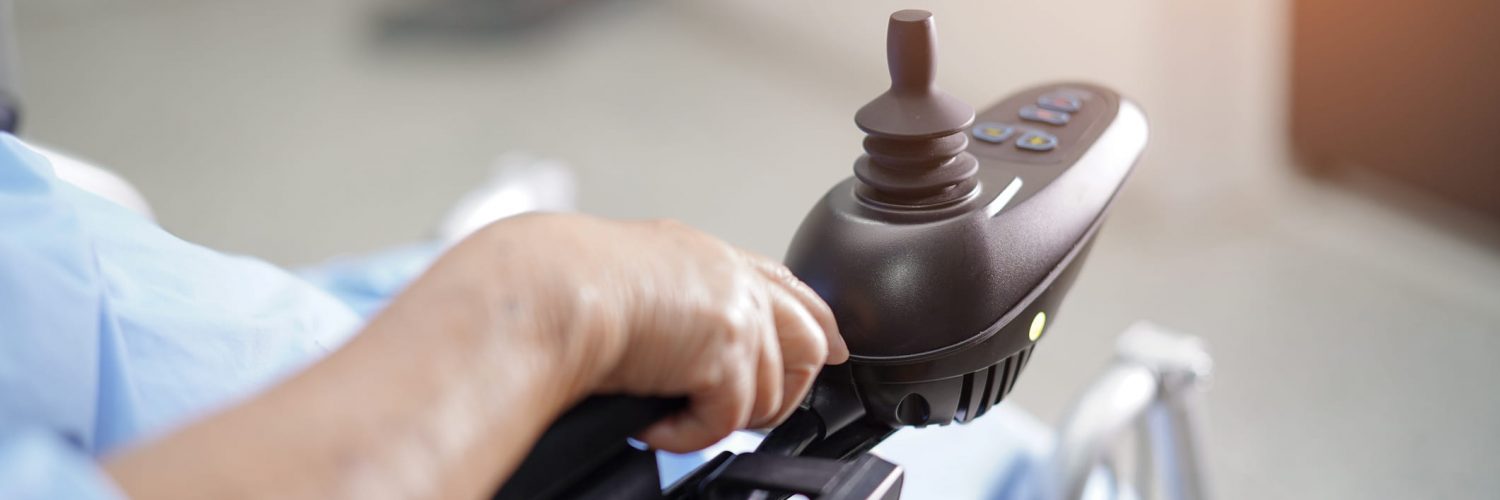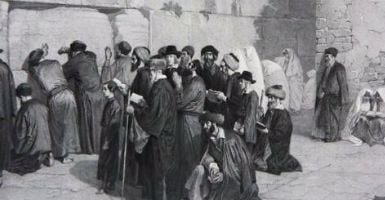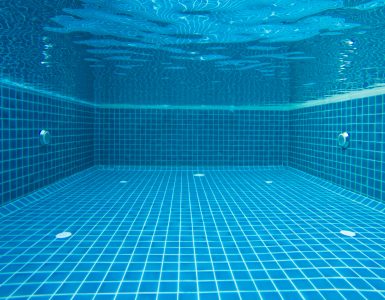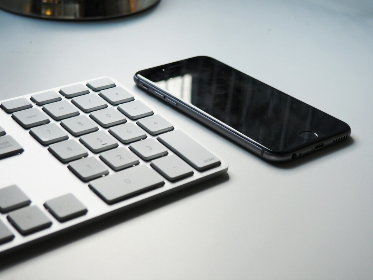“And Hashem E-lokim formed man of the dust of the ground, and breathed into his nostrils the breath of life; and man became a living soul (Targum Onkelos – l’Ruach M’malela – a speaking spirit)” (Bereishis 2:7)
Amyotrophic lateral sclerosis (ALS, colloquially known as Lou Gehrig’s disease) is a severe and incurable degenerative disease that mainly affects adults, with a peak incidence of onset between the age of 60-75 years. Its causes are not well understood, although familial ALS accounts for 5-10% of all cases. The disease affects the motor neurons responsible for muscle movement. The disease’s gradual destruction of these cells renders the brain incapable of activating these muscles. The relentless progression of the disease leads to muscle weakness, disability, and eventually death, with a median survival of three to five years. In contrast, the sensory neurons remain intact and fully functional.
At first, the disease results in mild symptoms. Asymmetric limb weakness is the most common presentation and can occur in the muscles of the arms or legs (characterized by falling, dropping objects, etc.). This progresses to decreased muscle mass in the limbs. In the advanced stage, the ability to speak, swallow, chew, and even breathe is severely impaired. However, the senses of sight, hearing, touch, taste, and smell are not affected. Likewise, most patients have no cognitive impairments.
These symptoms fill the life of a patient with advanced ALS with indescribable suffering. Essentially, the patient becomes imprisoned in a body that is unable to act or communicate with its environment while remaining fully aware of everything going on around them.
To ease their suffering, special devices have been developed to enable communication, albeit in a limited fashion. For instance, devices containing highly sensitive cameras can be used to record the movements of the patient’s eyes and eyelids and convert them into messages that appear on a computer monitor. People with ALS can learn this “language” and use it to communicate with those around them. More advanced devices use infrared technology to track pupil movements that can move an on-screen cursor much like the way an ordinary mouse operates. (These technologies are also suitable for people with spinal cord injury, cerebral palsy, multiple sclerosis, and any other condition that prevents a person from using a standard mouse).
As far as curing and preventing the advance of ALS is concerned, Halacha considers it a life-threatening condition that justifies measures of Pikuach Nefesh.[1] Consequently, any treatment designed to prevent or slow the progression of the disease may be performed at any time, including on Shabbos. This is besides the fact that almost all such treatments only involve Issurim mi’d’Rabbanan. Therefore, a person with ALS may perform designated exercises, physical activities, and hydrotherapy on Shabbos (if these are required daily). He is permitted to use respiratory support devices and so on. However, the grounds for leniency seemingly do not extend to using the devices described above that do not treat the disease. While they ease the patient’s suffering by allowing him to communicate with his environment, they have no curative effect on the disease. As such, the question is: may a person with ALS use electronic personal communication devices on Shabbos?
To answer our question, we first need to examine the status of a Melacha performed unusually – i.e. using eye movement. In our essay for Parshas Beshalach 5779[2], we discussed an innovative device that is operated by a person’s thoughts (Machshava) and cited several, fascinating sources regarding the question of whether a Melacha performed through a Machshava constitutes Chilul Shabbos. We discussed B’nei Yisrael’s cooking Man in the desert which was performed using Machshava according to the Mechilta, and noted that they were specifically instructed to “cook it” before Shabbos. The Moshav Zekenim (Bamidbar 8:11) explains:
Why was it forbidden to think about it on Shabbos so that it would assume a taste of cooked food? We may answer that since it would not be transformed except through his speech (“Diburo”), it was considered a constructive act.
The Moshav Zekenim implies that acts wrought by Machshava do not constitute Melachos, but those wrought by Dibbur do.
The Kli Chemda discusses the Mechilta at length and examines the distinctions that may be drawn between the preparation of the Man and the general question of performing a Melacha using Machshava (see our earlier essay). This essay will focus on his contention that any Melacha performed by Machshava should be considered ki’l’Achar Yad (performed in an unusual way) and only Assur mi’d’Rabbanan. This principle is summarized by the Shulchan Aruch haRav (beginning of O.C. 301):
All of the Melachos are only forbidden mi’d’Oraisa if they are performed on Shabbos in the manner that they are performed during the week. But if a person performs them differently than the way he performs them during the week – in a way in which they would not be performed during the week – he is exempt from [punishment] mi’d’Oraisa but it remains Assur mi’d’Rabbanan[3], lest he come to perform it as he does during the week. How so? For example, if he carries an article on the back of his hand, with his feet, mouth, in his armpit, shoe, etc. which is not how he would carry it during the week, he is exempt, though his act was forbidden. However, if he carries foods in his mouth, he is liable, as this is also how they are carried during the week.
Ostensibly, this would apply both to acts performed through Machshava and those performed using speech or eye movement (unless the acts in question are usually performed by those means). However, the Kli Chemda contends that regarding the Man, the use of Machshava to cook it was not considered ki’l’Achar Yad because this was the regular way in which it is cooked – “zehu bishulo”.
In fact, the parameters of ki’l’Achar Yad, unlike the general rules of Hilchos Shabbos (such as Melacha sheEina Tzricha l’Gufa, etc.), do depend on the Metzius (the given reality, which may be subject to change), and on each person and situation. For example, regarding the Melacha of Koseiv (writing), the Rambam rules (Hilchos Shabbos 11:14) that if a right-handed person writes on Shabbos with his left hand, or a left-handed person writes with his right hand, he is exempt. If an ambidextrous person writes with either hand, he is liable. We see that there is no set Halachic parameter that determines how a person must write to violate Shabbos – it depends on the person in question and what would constitute a Shinui for him. (The Rambam’s ruling is based on the Gemara in Shabbos 103.)
For this reason, the Poskim agree that typing on a computer or smartphone is not a Shinui, even though it is performed with two hands, as this is the normal method of typing. Therefore (assuming we consider words that are typed on a digital screen to have been “written”), a person would be liable for typing on these devices on Shabbos.
At first glance, this implies that the use of a specialized device by an ALS patient would constitute a Melacha, as this is its regular manner of usage. However, there is a significant distinction between the cases. The Man was a fundamentally unusual type of food, and the manner in which it was cooked bears little comparison with how regular food is cooked. It is therefore reasonable to consider it to have its specific method of cooking. However, when a left-handed person writes with his dominant hand, it is not considered a Shinui because writing is generally performed in this manner.
The assistive devices used by patients with ALS are examples of the numerous electronic devices and computers that exist today, although they utilize a unique technology to “write” and transmit messages. The overall method they employ in their activation and writing is fundamentally different than that of other devices. Overall, there is no reason to consider these devices individually, and it is therefore reasonable to assume that activating them using eye movement would be considered a Shinui, and their use on Shabbos should be permitted.
If we were discussing an Issur d’Rabbanan, we would certainly permit even a Choleh she’Ein Bo Sakana to violate the Issur with a Shinui. However, the majority of contemporary Poskim consider the closing of an electrical circuit to be a Melacha d’Oraisa. Regarding Melachos d’Oraisa, the Shulchan Aruch rules (O.C. 328:17):
A patient who is bedridden due to his illness, but there is no danger to his life… we may instruct a non-Jew to treat him, but we may not desecrate Shabbos on his behalf by [performing] an Issur d’Oraisa, even if one of his limbs is in danger.
Regarding whether a Yisrael may perform an Issur d’Rabbanan on his behalf [there are four opinions:] [a] Some permit it even if none of his limbs are in danger. [b] Some say that if there is a danger to one of his limbs the act may be performed, but if not, it may not. [c] Some say if there is no danger to any of his limbs the act may be performed with a Shinui, and if there is a danger to one of his limbs it may be performed without a Shinui. [d] Some say that even if one of his limbs is in danger, one may not perform any act that is based on Torah law, but acts that are not based on Torah law may be performed even if there is no danger to any of his limbs. The third view appears to be correct.
In other words, the Shulchan Aruch cites a dispute as to whether it is permissible to perform a Melacha d’Oraisa with a Shinui on behalf of a Choleh sheEin Bo Sakana. The Shulchan Aruch’s position is to be stringent[4]. However, other Poskim permit it, such as the Shulchan Aruch haRav (ibid. 19):
But if there is no danger to a limb but he is bedridden, or he is in so much pain that his whole body is affected, a Yisrael may not perform a Melacha d’Rabbanan on his behalf, unless it is performed with a Shinui. [In fact,] if a Shinui is utilized one may even perform a Melacha d’Oraisa, as in the case of a “Gone’ach” (a person groaning in pain) [who may suckle] with his mouth – since he is performing the act in an unusual way it is only an Issur d’Rabbanan.
Other Poskim also concur with the Shulchan Aruch haRav. Some contemporary Poskim (such as Shemiras Shabbos keHilchasa 33, footnote 18) hold that one may rely on this opinion when other options are not available (such as if there is no non-Jew in the vicinity).
HaGaon Rav Asher Weiss Shlit”a explained that this ruling does not apply only to treating the patient’s disease, but also to alleviating his pain. This is similar to the rulingof the Maggid Mishna who contends that one may provide a Choleh sheYesh Bo Sakana with all of his needs on Shabbos – even those that do not help cure his illness. Rav Asher supported his position from a ruling of Rav Shlomo Zalman Auerbach zt”l (Minchas Shlomo 1:9) that those who are hard of hearing may use hearing aids on Shabbos. Rav Shlomo Zalman notes that “one may be lenient because they are considered Cholim sheEin Bo Sakana”, even though hearing aids do not cure a person of his hearing deficiency.
Rav Asher permits the use of specialized devices on Shabbos for ALS patients for the aforementioned reasons. He also added that since we are discussing a Melacha performed with a Shinui which is not a Melacha d’Oraisa, one may also rely on the view of the Beis Yitzchak (Y.D. 31, Hashmatos) and Maharsham (2:247) that completing an electrical circuit on Shabbos is only an Issur d’Rabbanan of Molid. In their view, this case would be a “Shevus diShevus b’Makom Tzorech Gadol” – two levels of d’Rabbanan (Shinui and Molid) in a case of great need which is permitted (Shulchan Aruch, O.C. 307:5). There can be no better example of “Tzorech Gadol” than this.
However, these devices can only be permitted for basic daily communication with his relatives and caregivers. They should not be utilized for other purposes, such as typing, surfing the Internet, or any other applications.
[1] Note that haGaon Rav Asher Weiss Shlit”a leans towards the position that a patient with ALS is not considered in a life-threatening state since there is no imminent danger. He therefore only permits activities permitted for patients with non-life-threatening conditions. However, it is possible that he agrees that interventions designed to cure or prevent the advance of the underlying disease are permitted on the grounds of Pikuach Nefesh; he only intends to rule out desecrating Shabbos for non-curative purposes. This is beyond the scope of this essay.
[2] Which can be found on the Bais Medrash website – https://www.medicalhalacha.org/torah-archive.
[3] “Patur Aval Assur”
[4] I.e. a Melacha d’Rabbanan must be performed with a Shinui, unless there is Sakanas Eiver (danger to a limb).















Add comment